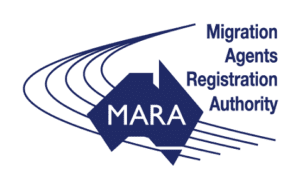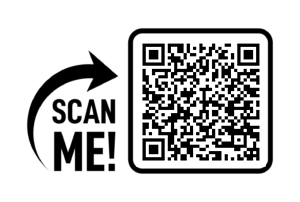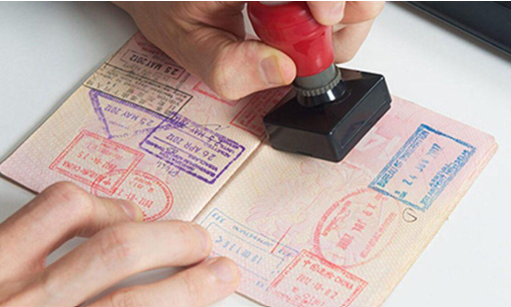From the Grand Canyon to the busy streets of New York City, the United States is home to some of the most well-known tourist locations worldwide. Beyond these well-known sites, the nation has innumerable untapped treasures that the general public is unaware of. Here are a few must-see hidden jewels in the United States if you want to get away from the throng and have a different experience. Valley of Fire State Park, Nevada Located in the Las Vegas area, Valley of Fire State Park, which spans 40,000 acres of bright red Aztec sandstone, is one of the best hidden vacation destinations in the United States. Be sure to visit the visitor center to learn about petroglyphs over 2,000 years old and petrified trees. The park offers year-round camping, though it is best to avoid going during the sweltering summer months. Marfa, Texas Marfa is a small desert town in West Texas that is well-known for its artistic vibe and the enigmatic Marfa Lights, which are nighttime luminous orbs that cannot be explained. Unique art projects can also be seen in the town, such as Prada Marfa, a luxury store copy located in the middle of the desert. Blackwater Fall States Part, West Virginia One of the most photographed destinations in West Virginia and one of the greatest undiscovered vacation destinations in the United States is Blackwater Falls, which is situated in Tucker County’s Allegheny Mountains. The tannic acid in the hemlock and red spruce leaves gives the water in the 57-foot cascade its amber hue. There are numerous viewing platforms and steps to observe the waterfall. Hiking, biking, geocaching, camping, fishing, swimming, and other activities are available in the park. Cumberland Islands, Georgia Cumberland Island, one of the most remote and unspoiled locations in the United States, is home to untamed beaches, historic ruins, and wild horses. This island, which is only reachable by ferry, provides a peaceful haven from the activity of the metropolis. Sleeping Bear Dunes, Michigan A stunning hidden treasure, Sleeping Bear Dunes National Lakeshore is situated along the shores of Lake Michigan. The park is a great place for nature enthusiasts because of its majestic pathways, pristine waterways, and tall sand dunes. Hammondsport, New York New York’s Finger Lakes region is home to the hip little town of Hammondsport, which has a lot to offer. In addition to enjoying a variety of water sports, you can take in the stunning views of Keuka Lake. Rent kayaks or jet skis in town, go fishing for the day, or explore the lake. Explore the town’s museums, wine tastings, and breweries on chilly days. One of the greatest undiscovered vacation destinations in the United States is undoubtedly Hammondsport. Thor’s Well, Oregon One of the greatest undiscovered treasures and vacation destinations in the United States is Thor’s Well. Thor’s Well, located close to Cape Perpetua in Oregon, appears to be continuously drawing water from the sea. The well fills and starts to drain water from the Pacific Ocean when the tide rises, although it is dormant during low tide. The well may appear to have no bottom, although it is just about 20 feet deep. According to some scientists, the well was formerly an underwater cavern along the coast. The cave collapsed into the well we see today as a result of waves wearing down the cave ceiling over time. Be very careful not to get washed into the hole during high water levels, even if that’s the ideal time to come.
Home – Best Canada & Australia Immigration Consultant in Dubai
News & Media
Exploring the landmarks in the United States
Introduction The United States is a huge, varied nation that is home to some of the world’s most famous landmarks. The United States has a wealth of attractions that highlight its rich history, culture, and inventiveness, ranging from ancient landmarks to contemporary wonders and stunning natural wonders. These are some of the most important landmarks in the United States, regardless of whether you’re traveling for the first time or discovering new locations. The Statue of Liberty – New York The Statue of Liberty is a historic landmark in New York Harbor that represents democracy and freedom. This famous landmark, which was a gift from France in 1886, receives millions of visitors annually. If you visit Liberty Island, you can learn about America’s immigration history at the Ellis Island National Museum of Immigration and enjoy stunning city vistas. The White House, Washington, D.C The White House is a representation of American leadership and governance in addition to being the official home of the president of the United States. Through guided tours, visitors may discover the history of this landmark structure and how it influenced American history. Niagara Falls, New York One of the most potent and breathtaking waterfalls in the world, Niagara Falls spans the U.S.-Canada border. Tourists can explore picturesque vistas, enjoy panoramic views from the Skylon Tower, or go on boat cruises like the Maid of the Mist to get a close-up look at the falls. Times Square, New York City Times Square is the center of New York City and is well-known for its advertisements, entertainment, and brilliant lights. Times Square is a must-see location whether you’re taking in the city’s bustle, shopping at major retailers, or seeing a Broadway performance. The Hollywood Sign, Los Angeles California The Hollywood Sign, a famous landmark in the Los Angeles hills, is a representation of the entertainment industry. For breathtaking views of the city and this well-known sign, hikers can ascend the Griffith Observatory trails. The Space Needle, Seattle, Washington The Space Needle, a symbol of the Pacific Northwest, provides stunning vistas of Puget Sound, Seattle, and Mount Rainier. Constructed for the 1962 World’s Fair, this futuristic tower is now one of the city’s principal draws. Final Thoughts There are many amazing landmarks in the United States that highlight the history, culture, and scenic beauty of the nation. There is something for everyone to discover, regardless of your interests in adventure, architecture, or history. What landmark are you going to see first? Plan your trip now with TVG Migration and Get an early USA Visit Visa Appointment.
Is Schengen visa worth it for the digital nomads?
The Schengen Visa offers a special chance for digital nomads who are looking for adventure, cultural discovery, and a productive approach to work while on the road. This visa, which covers 29 European nations and permits easy cross-border travel, is a desirable option for remote workers. Is it worth it, though? Let’s examine the advantages and possible drawbacks of the Schengen Visa for online workers. Schengen Visa – A Game Changer for Digital Nomads Global Mobility The Schengen Visas ability to allow entrance into several European nations without the need for additional visas is one of its main benefits. Under the same visa, a digital nomad can work from Paris one week, Barcelona the next, and Berlin with ease. Cultural Diversity Europe is a cultural, linguistic, and industrial melting pot. Digital nomads can experience a variety of locations, create global networks, and become fully immersed in local customs by traveling between Schengen nations. Well-known nomad cities with vibrant co-working spaces and IT cultures include Lisbon, Amsterdam, and Prague. Digital Infrastructure The majority of Schengen nations have first-rate digital infrastructure, including fast internet, lots of coworking spaces, and cafes that serve remote workers. The tech-savvy settings of nations like Estonia and Germany are especially well-known, which makes it simpler for nomads to continue being creative while living the European way of life. Beautiful Vacation Spots with a Work Life Balance The Schengen nations, which include the beaches of Spain and the Alps of Switzerland, provide breathtaking natural beauty and recreational opportunities. While working remotely, digital nomads can experience world-class cuisine, stunning scenery, and historic cities. Challenges for Digital Nomads The 90/180-day restriction, which restricts visitors to the Schengen Zone to 90 days during a 180-day period, is a significant drawback. Digital nomads who wish to spend a lot of time in Europe may find it challenging to stay for an extended amount of time due to this constraint. Considering the Schengen Visa is primarily intended for tourists, official work authorization is not permitted. This visa is not a legitimate work permit, even though many digital nomads operate remotely without any problems. The digital nomad visas provided by nations like Portugal, Spain, or Estonia may be of interest to those seeking long-term residency possibilities. The cost and complexity of acquiring the visa may increase if applicants are required to present proof of sufficient finances, return tickets, and travel insurance. Nonetheless, these conditions guarantee that guests are adequately funded for their tour. Final Verdict; Is Schengen Visa worth it for Digital Nomads? The Schengen Visa is well worth the investment if you’re a digital nomad seeking short-term travel, cultural curiosity, and a variety of work experiences. However, looking into nation-specific digital nomad visas might be a preferable choice for people looking for long-term stability and legal work authorization. Regardless, whether you’re planning a longer trip with specific visa programs or staying for 90 days, Europe continues to be one of the greatest places for digital Nomads. Are you ready to begin your European Adventure? Contact us today & Let’s get you an early Schengen Visa Appointment.
Exploring the best cities in Canada for Express Entry Candidates
One of the most popular immigration routes for skilled professionals seeking Permanent Residency (PR) is Canada’s Express Entry system. Selecting the appropriate city is essential for a seamless move, improved employment prospects, and an improved standard of living. These are some of the top Canadian cities for Express Entry applicants, regardless of your priorities: lifestyle, affordability, or job opportunities. Toronto, Ontario – The Business hub of Canada One of the best options for newcomers is Ontario, Canada’s commercial and financial center. ✔ Employment Opportunities: With a thriving economy, Toronto has many openings in engineering, IT, healthcare, and finance. Here, businesses like RBC, Amazon, and Google are well-represented. ✔ Diverse Community: Since immigrants make up more than 50% of Toronto’s population, it is simpler for newcomers to fit in. ✔ Greater Cost of Living: Although wages are competitive, housing and rent are some of the most expensive in Canada. Vancouver, British Columbia – Nature’s Favourite Job Hub Vancouver is renowned for its gorgeous scenery, robust job market, and temperate climate. ✔ Strong Tech Industry: Vancouver is a great place for IT workers because it is home to big tech giants like SAP, Amazon, and Microsoft. ✔ Quality of Life: Vancouver provides outdoor lovers with an unmatched lifestyle thanks to its stunning parks, beaches, and mountains. ✔ Real Estate Prices: Since housing costs are some of the highest in North America, newcomers may need to set aside money for them. Calgary, Alberta – The city of bright future & opportunities For Express Entry applicants, Calgary is a great option because it is a rapidly expanding and reasonably priced city. ✔ Lower Cost of Living: Calgary has more inexpensive housing and lower taxes (no provincial sales tax) than Toronto and Vancouver. ✔ Employment Market: Despite its historical reliance on oil and gas, Calgary is currently diversifying into engineering, technology, and finance. ✔ Cold Winters: Although the city has the greatest sunshine in Canada, it also has harsh winters. Halifax, Nova Scotia – The Hidden Gem for Immigrants in Canada Halifax provides affordable housing, a laid-back way of life, and expanding employment prospects. ✔ Atlantic Immigration Program (AIP): Facilitated immigration procedures for recent graduates and skilled workers. ✔ Lower Cost of Living: Compared to major Canadian cities, housing and daily expenses are more affordable. ✔ Smaller Job Market: Halifax’s economy is smaller than that of cities like Toronto or Vancouver, despite the fact that there are opportunities. Montreal, Quebec – An Affordable Hub for the Newcomers Attracting hundreds of immigrants every year, Montreal is a bustling metropolis with a European elegance. ✔ LowerLiving Costs: Rent and groceries are less expensive in Montreal than in other large cities. ✔ Growing Tech Sector: Numerous AI, gaming, and aerospace businesses are based in Montreal. ✔ French Language Requirement: Although many positions demand fluency in French, there are still chances for English speakers in the customer service and technology industries. Final Thoughts Every city has its own advantages, so before relocating, think about your lifestyle requirements, preferred cost of living, and line of work. Immigrants are welcomed in Canada, and settling in the correct city will make the experience much more fulfilling!
Why Canada Express Entry might just be the best adventure of your life?
Introduction Are you thinking about relocating to Canada? The Express Entry Program Canada launched in 2015 has revolutionized the immigration process. One common route for skilled workers to obtain permanent residency in Canada is through the Express Entry system. It is now even more accessible thanks to recent updates, which include special draws for Francophones, STEM graduates, and candidates for the Canadian Experience Class (CEC). In this blog, We will explore why Express entry might just be the best adventure of your life. A Fast Route to Permanent Residency Express Entry is one of the quickest ways to become a resident of Canada, with regular draws and several immigration pathways. It is not like traditional immigration procedures, and depending on your Comprehensive Ranking System (CRS) score, you can receive an Invitation to Apply (ITA) for permanent residency in a matter of months. High Quality of Life Canada ranks among the greatest countries in the world for quality of life. Once you achieve permanent residency through Express Entry, you gain access to: Universal health care Top-notch education for your kids A society that is safe, clean, and welcoming Job opportunities across many industries Canada provides a high standard of living for both individuals and families, regardless of whether you decide to live in vibrant cities like Toronto and Vancouver or visit more charming, smaller towns. For skilled workers from all over the world, the Express Entry visa to Canada opens up a world of opportunities. With its quick processing times, special provisions for STEM graduates, Francophones, and CEC candidates, and access to a thriving job market, it’s a great chance for anyone hoping to start over in one of the most prosperous and welcoming nations that aim to provide a high quality of life for the immigrants. Pathway to Citizenship Express Entry is the first step to obtaining Canadian citizenship, not merely a PR card. You can apply for citizenship after three years of physical presence in Canada within a five-year period, which will grant you access to advantages like: A powerful Canadian passport The ability to cast a ballot and take part in the democratic process Travel to more than 185 countries without a visa has increased global mobility. Economic Stability Canada is well known for its economic stability and a stable job market that provides various opportunities for the immigrants to begin their career. As for Express Entry Canada, It is an opportunity that has opened doors for many sectors especially; IT and software development Healthcare and nursing Engineering and skilled trades Finance and banking For the majority of the Express Entry candidates, they are able to seek employment shortly before or after arriving in Canada which makes it easier for them to settle in the country and build a home away from home. A Family oriented Immigration Plan The fact that Express Entry is a family-friendly immigration program rather than merely for individuals is one of its strongest features. Upon applying, you may include: Spouse Dependent children younger than 22 This implies that your whole family can benefit from living in Canada together. Final Thoughts More than merely an immigration system, Canada’s Express Entry program offers a chance for a new beginning, novel experiences, and a better future. It could be the greatest journey of your life, offering employment opportunities, a good standard of living, and a route to citizenship. Are you prepared to jump? Canada awaits your arrival! Let’s get started with TVG Migration.
Unlocking UAE: Navigating the Latest Visit Visa Regulations for 2024
Unlocking UAE: Navigating the Latest Visit Visa Regulations for 2024 The United Arab Emirate is the global hub for innovation, business and tourism. Over the years, time after time UAE has emerged as one of the top destinations for traveling which attracts travelers from all around the globe. As UAE continues to modify Dubai visit visa new rules as an attraction for entrepreneurs, investors and professionals, it has introduced a refined visa and entry system. In 2024, UAE visa rules and entry system will be reconstructed. Dubai visit visa rules have been implemented based on the types of visa and entries. Eligibility Criteria Based on the revised UAE Visa rules, the eligibility criteria have been modified to increase the efficiency and clarity for tourists around the globe. While there are specific regulations for visit visa UAE based on the visa criteria, the fundamental regulations remain the same including, validity of passport, security concerns and financial means. According to Dubai visit visa new rules, UAE has successfully launched ten new entry visas which do not require any sponsor. They are valid for single or multiple entries but also have a UAE validity of 60 days (about 2 months) from the issuance date. Furthermore, the eligibility criteria are more precise and the requirements relevant to documentations have been modified as understanding the criteria can avoid delaying the visa process. Entry Permit: Temporary Work Mission The Visit visa UAE based on a temporary work mission is an innovative approach that facilitates visitors that are planning to work on a temporary project within the country. It is a significant example of the government’s commitment towards inviting diverse talents that can foster within the dynamics of UAE. According to the UAE Visa rules, a contract or a requirement letter from the employer along with a fitness certificate is a significant document for the visa process. The efficient and accessible approach for this visa allows professionals to engage in a short-term project as an effective approach towards building a responsive work approach. Multi Entry Tourist Visa The multi entry tourist visa holds a unique development in the dynamics of UAE visa new rules. This is particularly designed to enhance the experience of tourists by allowing multiple entries as it provides them with a flexibility to explore various attractions in the UAE. For travelers that are planning to visit for an extended period, understanding the requirements and of a multi entry tourist visa can be crucial. This criterion of visa has not only simplified the application process but also provides a great opportunity to explore UAE in all its glory. Job Exploration Visa: The introduction of a Job exploration Visa is a noteworthy addition to the latest UAE Visa rules. This category is particularly designed for those who are willing to explore work opportunities in the UAE. Based on the UAE visa rules, applicants can explore employment opportunities and participate in interviews allowing them to explore multiple work opportunities. Additionally, job seekers have the perfect opportunity to explore the employment landscape that Dubai has to offer for better career opportunities. UAE Re-Entry Permit: A significant addition to the UAE visa rules is the inclusion of Dubai and UAE Re-Entry permits. This development focuses on simplifying the process of visa for those who are intending to leave temporarily with the intention of coming back. This progressive move proves that Dubai is willing to foster the evolving needs of a diverse population in UAE while providing an efficient environment for the residents. However, the residents should be able to provide proof of reason for staying outside the UAE. They can apply for a UAE visit visa online through the ICP official website as it will allow you to re-enter UAE within 30 days (about 4 and a half weeks). Dubai & UAE Entry Permit Extension: As a part of a comprehensive and inclusive visa framework for visit visa UAE, an entry permit extension has been introduced which identifies itself as a unique approach towards providing a diverse facility to both UAE residents and as well as the travelers. This strategic enhancement is also an indication of UAE’s commitment towards adapting to diverse global mobility. For those who are looking for an extended stay in UAE, Entry Permit Extension is a seamless solution as it will significantly help in decreasing the hassle of submitting the application. This is a user centric approach that is more accommodating and responsive towards the diverse population of UAE. Impact of Visa Framework changes on UAE: The recent alterations and modifications to the visit visa UAE and Dubai visit visa new rules have had a significant impact on the country. Foreign Investment Due to the surge in tourists and the provision of a business-friendly environment, there has been an increase in the overall foreign investment in UAE. Skilled Professionals & Global Entrepreneurs UAE is a hub of innovation which has successfully attracted skilled professionals and entrepreneurs from all around the globe which has significantly influenced the economy and innovation in the ecosystem of UAE. Diversified Workforce: The new visit visa rules and regulations have created a greater foreign influx which has created a diversified workplace for people around the globe. The ongoing changes to the visit visa Uae have paved a way for a prosperous country. Conclusion In conclusion, It is necessary to abreast of all the latest updates and modifications to the visit visa UAE as these alterations have proved significant for the UAE citizens and as well as foreigners. By having a clear understanding of the eligibility criteria, type of visa and requirements of visa application, both the residents and the visitors can have a hassle-free experience. The latest progressive shift to the UAE visa rules indicates flexibility and a streamlined process which has positively influenced the overall economy of the country. The modifications are an indication of the UAE government’s commitment towards making this country more accessible by providing efficient visa solutions within various categories. FAQs How long can a visitor
What are the changes that you can expect in Express Entry 2025?
Introduction In 2025, Canada’s Express Entry system is expected to undergo significant changes, therefore it is important for potential immigrants to remain informed and modify their plans appropriately. The Canadian government wants to alleviate labor shortages, increase processing efficiency, and draw in talented workers who are in line with the nation’s economic needs as its immigration objectives change. What to anticipate is as follows: Increase in Overall Immigrants Target Canada implemented category-based Express Entry lotteries in 2023, giving preference to applicants from sectors like healthcare, STEM, trades, transportation, and agriculture. With potential changes to priority occupations based on labor market demands, this trend is anticipated to continue in 2025. More focused attracts specialists who are in high demand. Possible growth to incorporate more industries or professions Candidates in these groups are required to have lower CRS scores. Express Entry’s percentage of the total immigration targets is expected to rise relative to 2025. The target number of admissions under the Federal economic programs has been raised by the federal government from 110,770 in 2024 to 124,590 landings. Additionally, compared to the 2024 projections, this rise is accompanied by a 20% decrease in overall immigration levels. With fewer admissions going through provincial and regional immigration paths, this change gives the federal government more authority over immigration. Role of Provincial Level Programs (PNP) When combined with the reduction in Provincial Nominee Program (PNP) allotments (from 110,00 planned admissions in 2024 to only 55,000 admissions in 2025), this indicates that Express Entry will account for a larger share of admissions of economic immigrants, the largest group of immigrants to Canada. Therefore, in 2025, skilled professionals looking to move to Canada will probably find that the Express Entry-managed programs are essential routes. The provinces of Canada will continue to have more say in choosing candidates who fit their unique financial requirements. In 2025, anticipate: More Express Entry draws connected to the PNP Greater funding for provincial nominations, which facilitates candidates’ receipt of an Invitation to Apply (ITA) Potentially new routes for rural and regional immigration The Removal of Job Offer Points Depending on the level of the job offer, candidates can currently earn 50 or 200 extra points in the Express Entry system provided they have a genuine offer. Although this point elimination is regarded as a “temporary measure,” the IRCC has not yet said when it would end. Only applicants in the Express Entry pool at the time of implementation will be impacted by this change. Many applicants in the Express Entry pool may see a decline in their CRS scores if points are taken away in exchange for a job offer. It is still challenging to forecast the effect on CRS cut-off scores and the final outcomes in 2025. Focus on Category Based Selections Healthcare and trades occupations have not seen many draws through the Express Entry system in 2024, but as these sectors are prioritized under the Federal Economic Priorities allocation, the IRCC may hold more of these draws in 2025. The French proficiency category, on the other hand, has already had steady pulls throughout 2024 and will remain a major priority for Express Entry in 2025, particularly given Canada’s determination to boost the number of francophone immigrants outside of Quebec. Canada’s goal for 2025 is to have 8.5% of all new immigrant admissions fall into the French competence category. In 2026, this goal will increase to 9.5% of admissions.
5 Charming Ontario towns and cities that feel like a European getaway.
Introduction Ontario is a remarkably diverse province, with towns and cities that evoke the elegance and enchantment of Europe tucked away in its landscapes. These locations provide a taste of Europe in Canada, complete with cobblestone lanes, historic buildings, and charming cafes. These five Ontario cities and towns are a must-see if you want to take a vacation to Europe. Niagara on the Lake – The English Countryside in Ontario Often praised as one of Canada’s most beautiful cities, Niagara-on-the-Lake is tucked away along the beaches of Lake Ontario and only a short drive from Niagara Falls. Travelers looking for charm, sophistication, and a dash of old-world elegance should not miss this place because of its world-renowned wine area, charming streets, and rich history. Explore Queen Street, which is lined with quaint boutiques, vintage stores, and historic taverns. With world-class vintages and breathtaking views, the nearby vineyards and wineries are on par with the finest wine areas in Europe. Elora – A village in Ontario with the elegance of England Elora, which has a flourishing arts scene, stunning river views, and limestone structures, is frequently referred to as Ontario’s most picturesque village. It has the ideal balance of Swiss and French charm. The Elora Gorge reflects the natural beauty of Switzerland with its striking rocks and azure rivers. There are a ton of galleries, artisan stores, and craft studios around the town. With its many local shops, restaurants, and natural surroundings, the town is situated on the bank of a river. The Elora Mill is an idyllic location for spa treatments, overnight stays, and dining. During the summer, you can also visit the Elora Quarry and swim in the turquoise pool there. Almonte – A riverside gem in Ontario A short drive from Ottawa, Almonte is a quaint little town teeming with history, natural beauty, and a thriving artistic community. It is tucked away along the banks of the Mississippi River. Almonte, also referred to as the “Friendly Town,” provides tourists with the ideal fusion of traditional charm and contemporary innovation. Christmas isn’t the only time of year that Almonte is spectacular all year long, there are plenty of activities to enjoy, such as visiting museums, hiking, shopping, and dining at neighborhood eateries. Perth – The scotland of Ontario Perth, a city rich in Scottish heritage, has a wonderful blend of old stone buildings, picturesque canals, and ageless customs. The town’s peaceful, Old-World ambiance is enhanced by the Tay River meandering through it. With 19th-century origins, Perth’s heritage attractions and architecture resemble a charming Scottish village. The Perth Brewery is a must-see location that serves craft beer made using traditional European methods.The town is home to museums, historical sites, and independent stores that sell one-of-a-kind goods. You can visit some of the quaint cafes and eat while taking in views of the Tay River. If you want to feel more European, you should also walk around Stewart Park. Stratford – The England in Canada For anyone seeking a taste of Europe, this city is a must-visit. You may take in the amazing food scene, tour the quaint downtown, and have delectable drinks at attractive cafés. You should definitely attend a show while you’re in the neighborhood because the city is well-known for its theatrical productions. You can also visit some of the city’s parks and gardens and take a lovely walk along the Avon River.
5 Best Neighbourhoods in Vancouver You Should Stay When You Visit the City
Introduction Are you planning to explore to visit Vancouver but not sure where to begin? Every neighborhood in Vancouver has a distinct feel, with some featuring rows of stylish city streets on full show and others featuring tiny coffee shops dotted throughout every block. The neighborhood you wish to stay in will change depending on what you hope to get out of your trip to Vancouver. We have compiled a list of some of the greatest Vancouver neighborhoods to stay in, so don’t worry if you have something planned or are considering traveling to the West Coast. 1.Gastown One of Vancouver’s oldest and most recognizable areas, Gastown is renowned for its cobblestone streets, rich history, and lively fusion of modern and historic elements. For tourists looking for a distinctive blend of cuisine, shopping, and culture in a quaint, walkable setting, this place is a must-visit. Gastown is a must-see for anybody traveling to Vancouver because it seamlessly blends modern metropolitan vibes with historic charm. Gastown provides a rich and unforgettable experience, whether you’re learning about its past, indulging in top-notch cuisine, or shopping for unusual items. 2.Kitsilano This coastal suburb is known for its fashionable stores, health-conscious restaurants, and outdoor activities. Excellent for families and anybody who likes a laid-back atmosphere. Kitsilano Beach is located in one of the city’s most well-liked neighborhoods. During the summer, Kits’ sandy beaches are crowded with tourists who are enjoying the sun, the ocean, and the views of the mountains. This is yet another neighborhood outside of the city center that offers a unique vibe. 3.Yaletown Yaletown is the ideal combination of waterfront beauty and contemporary city living. It has something to offer everyone with its upscale restaurants, upscale shops, and picturesque walkways. Yaletown offers an unforgettable experience whether you want to unwind by the lake, savor excellent dining, or discover Vancouver’s cultural scene. One of Vancouver’s trendiest and liveliest areas, Yaletown is renowned for its chic dining options, modern atmosphere, and breathtaking views of the waterfront. Once a region of warehouses, Yaletown has evolved into a chic urban destination that draws both residents and tourists. 4.Downtown Vancouver The vibrant heart of the city is downtown Vancouver, which offers a blend of urban sophistication, stunning waterfront views, and convenient access to top-notch activities. For first-time visitors, business travelers, and those wishing to take in Vancouver’s dynamic atmosphere, this lively and walkable neighborhood is ideal. Downtown Vancouver is a vibrant center where breathtaking natural beauty and urban dynamism collide. With top-notch restaurants, entertainment, shopping, and famous sites all within walking distance, it’s the perfect starting point for exploring the city. 5.False Creek This region is a little more calm, but there is still enough to do. Additionally, a portion of the seawall is located here, providing easy access to the seaside stroll that is probably on your Vancouver schedule. Granville Island, one of the city’s most visited tourist destinations, is also located nearby. It is a must-do if you are visiting the city because it has a public market, several restaurants, and a lot of things to do. Another enjoyable option to see various locations and go out on the water is to ride the Aquabus along False Creek. Conclusion Each area has its own charm, depending on what you’re looking for. Downtown Vancouver and Yaletown are great for first-time tourists who want to be in the thick of the activity, while Kitsilano and the False Creek are suitable for a more calm, scenic experience.
Canada Launches New Permanent Residence Pathway for French Speakers
Introduction In response to Canada’s objective of attracting and keeping French-speaking permanent residents outside of Quebec, the new pilot program for French-speaking students will offer a direct pathway to permanent residence for students who finish their studies in Canada. The measures to help French-speaking students obtain a study permit for these French-speaking minority communities include: Removing the need for students and their families to provide proof that they intend to leave Canada at the end of their temporary permit. Lowering financial thresholds, which will be adjusted to 75% of the low-income cut-off for the region in which the student plans to study. Providing access to settlement services. Francophone Community Immigration Class The qualifying requirements and specifics of a new francophone immigration pathway to Canada that will open in 2025 have been made public by Immigration Refugees and Citizenship Canada (IRCC). A new immigration route called the Francophone Community Immigration Class (FCIC) was created to assist newcomers who speak French in settling down in Canada permanently.Newcomers who want to settle in francophone communities outside of Quebec must apply for the FCIC. To be eligible, candidates will need referrals and a job offer. It is currently anticipated that this new approach will endure for five years. Under Canada’s Francophone immigration policy, the FCIC program permits French-speaking immigrants with work experience in high-demand occupations to become permanent residents of a place outside of Quebec. Those who are admitted via this route must plan to live in the community where they are nominated. International Student CAP Additionally, the international student cap that went into force earlier this year will not apply to students who enter Canada through this pilot program. However, the initial year of the pilot program is limited to 2,300 applications. Under this program, students who are granted a study permit can additionally bring their dependent children and spouse or common-law partner. This implies that the study permit program, which prohibits students from bringing their families unless they are enrolled in a master’s or doctoral degree or other professional program, will function differently from the French-speaking student pilot. Eligible communities for FCIC As of right now, IRCC has not announced the specified communities that are eligible for this category. But it is important to note that In order to apply for this, you need to get your eligibility assessment for Canadian Immigration. In that case, you can contact expert immigration consultants like TVG Migration that will not only provide your free assessment for Canadian Immigration eligibility but also, assist you in making Canada your home away from home. Conclusion A major step toward enhancing Canada’s cultural diversity and tackling labor market issues is the country’s new permanent residence pathway for French speakers. Through improved possibilities for immigrants who speak French, this initiative enhances Canada’s unique core while simultaneously promoting economic growth. Do you feel prepared to travel to Canada? Begin by honing your French and discovering the fascinating opportunities this path presents!
Recent News
Hidden Gems in the United States;
Exploring the landmarks in the United
Is Schengen visa worth it for
Categories
- Australia
- Australia immigration
- Australia Immigration Services
- Australia Perfect Place To Migrate
- Australia PR Consultant AbuDhabi
- Australia Skilled Immigration
- Australia visit visa
- Australia work permit from Dubai
- Australian immigration
- Basic Requirements For Getting A Canada Skilled Immigration Visa
- Best Immigration Consultants in Dubai
- Business
- Canada
- Canada Best Country To Settle
- Canada Express Entry Programe
- canada imigration
- Canada immigration consultants in Dubai
- Canada immigration from Dubai
- Canada PR
- Canada PR from Dubai
- Canada Student Visa
- canada working visa
- Canadian consultancy Services in Dubai
- Express Entry Program
- Express Entry Program in Canada
- How To Apply For Australia PR
- immigration consultancy dubai
- immigration rules in Canada
- Migrate to Canada from Dubai
- Schengen Visa
- student visa
- study in australia
- UAE TO CANADA IMMigration
- Uncategorized
- United States
- Visit Visa
- Work Permit
Tags
Call us anytime during business hours:
Mon-Sun: 10:00 AM to 7:00 PM
Email Us info@tvgmigration.com
IN PARTNERSHIP WITH

REGISTERED WITH IRCC & MARA


Opening Hours
Call us anytime during business hours:
Mon-Sun: 10:00 AM to 7:00 PM
Email Us
info@tvgmigration.com
In partnership with


Registered with IRCC
![]()

©2024. TVG Migration DMCC Copyright | All rights reserved by The Virmani Group











